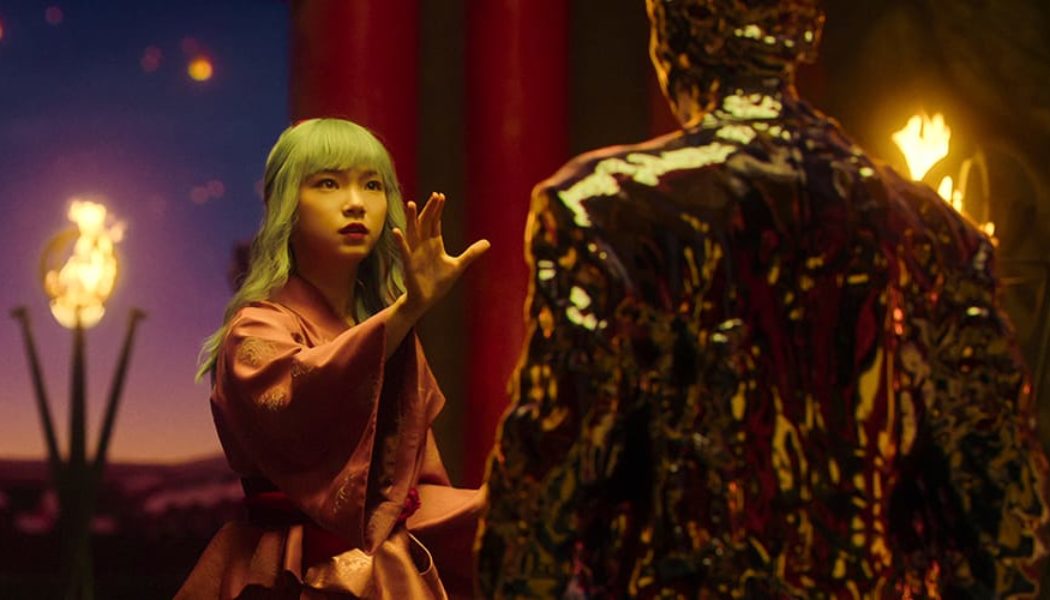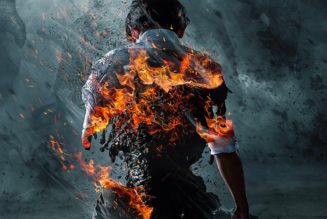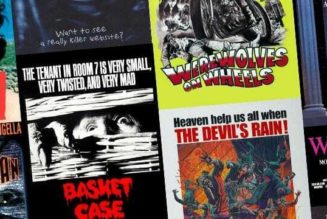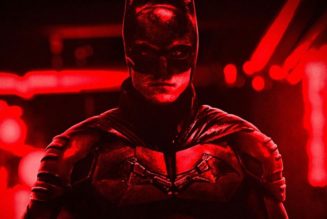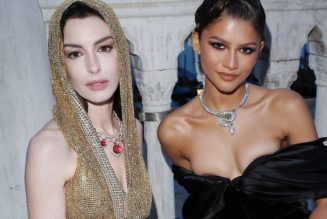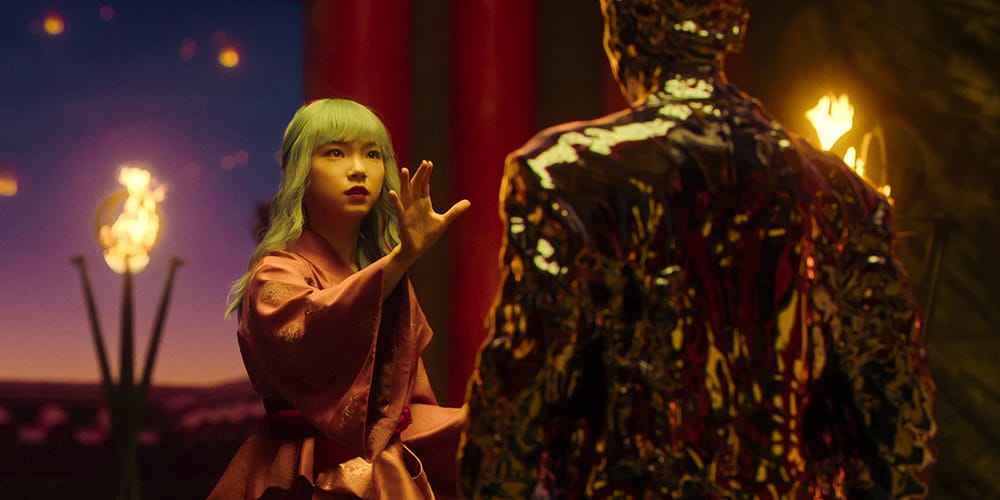
On December 13, 2023, Netflix hosted an exclusive screening for the first live-action episode of Yu Yu Hakusho at Tokyo’s Ariake Arena, marking the streaming service’s biggest world premiere event to date. As one of the few permanent arenas that were specially built for the 2020 Summer Olympics and Paralympics, the venue was transformed for a night to immerse nearly 5,000 attendees in the world of Yu Yu Hakusho, with merch stalls, displays of props and costumes, as well as interactive games for fans to indulge in.
The original Yu Yu Hakusho manga debuted in 1990 on Weekly Shonen Jump and eventually became one of Yoshihiro Togashi’s most iconic and best-selling works. During its original run from 1990 to 1994, the manga gained popularity for its nuanced approach to the Japanese juvenile delinquent trope, supernatural action and fleshed-out character development arcs that inspired many popular manga creators today – including Naruto’s author Masashi Kishimoto and Jujutsu Kaisen’s creator, Gege Akutami. Yu Yu Hakusho’s equally iconic TV anime premiered in 1992 and became an instant hit, further establishing its influence on the shonen genre.
Over thirty years after Yu Yu Hakusho’s original release, the IP’s charm and influential status persevered with its core fans who grew up in the ‘90s. The production team of Netflix’s current live-action adaptation is mostly made up of people who experienced the original hype of Yu Yu Hakusho’s manga and TV anime. In an exclusive sit-down with Hypebeast, Director Sho Tsukikawa recalled how much he loved the original series during his childhood and how it was the driving force for him to revisit the series as an adult. He then realized just how much the anime could resonate with today’s audience. “[Yu Yu Hakusho’s] entertaining aspects along with its story’s serious themes would make an interesting live-action series,” Tsukikawa explained.
When Netflix first shared the official visuals for its One Piece live-action, it was met with doubts from fans all around the world. However against all odds, the Netflix series was hugely successful, garnering positive reception among new and existing fans, while also setting a new golden standard for anime and manga live-action adaptations. Similarly, when Netflix first revealed a first look at its Yu Yu Hakusho cast, the news saw a similar unsureness from fans, many of whom were concerned about whether or not a live-action would be able to maintain the integrity of the beloved anime characters.
The success of One Piece was a silver lining for fans who were disheartened and disappointed with the lack of compelling anime and manga live-action adaptations over the years. With One Piece, one of the main contributing factors to its success was mainly due to its author Eiichiro Oda’s involvement in the casting and pre-production of the series. In the case of Yu Yu Hakusho, the anime’s author Yoshihiro Togashi, was not as hands-on as Oda was with One Piece. Though that was the case, he did entrust Netflix and the series’ showrunners with creative freedom. Kaato Sakamoto, Netflix Japan’s VP of Content also noted that Togashi’s only request for them was “to ensure a great quality adaptation.”
Prior to the premiere, Hypebeast participated in Netflix’s APAC Showcase at their Roppongi office, where Akira Morrii, the show’s producer shared insights behind the production for Yu Yu Hakusho. In responding to concerns on casting, Morrii explained, “We looked for actors who could capture what was great about these characters in the original manga and also in our script. It doesn’t necessarily mean that they need to look exactly like the characters. Instead, we tried to look for people who could portray and capture the essence of the characters, so they could bring Yusuke, Kurama, Hiei, Kuwabara and the rest to life.”
Once Netflix unveiled more promotional materials, the core focus of the series became clearer. In the teaser and trailer alone, it was evident that an immense level of time and care was put into Yu Yu Hakusho‘s production. As explained by the show’s creators, Yu Yu Hakusho’s fantasy premise and supernatural action make it a naturally VFX-heavy title that production companies were afraid to take on. Even when director Sho Tsukikawa was brought on board, he thought it would be “an impossible project to materialize.” Given the refinement in visual effects and CGI over the years, the showrunners now believe it is possible to present even the most intricate worlds and bizarre creatures in a enthralling manner. With this in mind, Netflix enlisted Scanline’s Ryo Sakaguchi – a veteran in the industry whose resumé is packed with experiences from Hollywood productions such as Game of Thrones – to assume the role as Yu Yu Hakusho’s VFX Supervisor.
“The visual effects for Yu Yu Hakusho aren’t just difficult for a Japanese show — it’s difficult, period,” Sakaguchi tells Hypebeast, adding that the project is the most challenging to date in his entire career. According to Kaato Sakamoto, the five-episode Yu Yu Hakusho live-action series took almost five years to complete — from two years of pre-production, over 10 months of shooting and another two years for post-production. When asked about which particular aspect from Yu Yu Hakusho was on the top of their list in terms of technical difficulty, Tsukikawa and Sakaguchi both agreed that it was the scene where the older Toguro brother is on the shoulder of his towering younger brother.
“The visual effects for Yu Yu Hakusho aren’t just difficult for a Japanese show — it’s difficult, period.” – Ryo Sakaguchi
Tsukikawa described the process of bringing that scene to life as “more of an analog approach” — the same scenes were shot different for few times, before they could manually calculate the differences in both actors’ proportions to create the bizarre yet unsettling visual effect as demonstrated in the original work. “We’ve done a lot of tests prior to shooting as well, so we had the whole shooting plan figured out. Then our production crew and the assistant directors helped act out the scenes for the tests before the actual actors do their takes,” Sakaguchi elaborated.
Capturing the original material’s essence is another fundamental aspect of live-adaptations. Speaking on this topic, the Yu Yu Hakusho director posed an important question that underlay the plot of the anime: “Could different species understand and accept each other?” While the original story focused on the conflicts between humans, demons and yokai (monster-like creatures), its broader ideas and nuanced sensibilities are imperative in upholding Yu Yu Hakusho‘s timeless appeal.
For existing fans, Netflix’s Yu Yu Hakusho is a far-cry from a faithful adaption of its original. That is to be expected. As the live-action comprises of only five episodes in comparison to the ’90s anime which boasted 119 episodes and the original manga with its 175 chapters — both had more running time to explore its complex themes, plot and characters. As a standalone live-action series, Yu Yu Hakusho is a short, but explosive ride brimming with nostalgia and blood-boiling action sequences. While it is still unclear whether Netflix has plans to create another season for Yu Yu Hakusho, it certainly opened a door for new fans globally, offering them a glimpse of Yoshihiro Togashi’s dark fantasy world. According to Netflix, the streaming platform saw a surge in viewership for the One Piece TV anime on its platform following the release of its live-action series. Netflix predicts that the same effect will likely apply to Yu Yu Hakusho, now that the anime is available to stream on the platform alongside its live-action adaptation.
As of today, the live-action series has garnered 7.7 million views since it premiered on Netflix last week, making this the biggest debut to date for a Netflix Japanese series. It is currently ranked first place globally in the streaming platform’s non-English series category and also remained in the Top 10s in 76 countries. All five episodes of Yu Yu Hakusho are now available to watch on Netflix.
